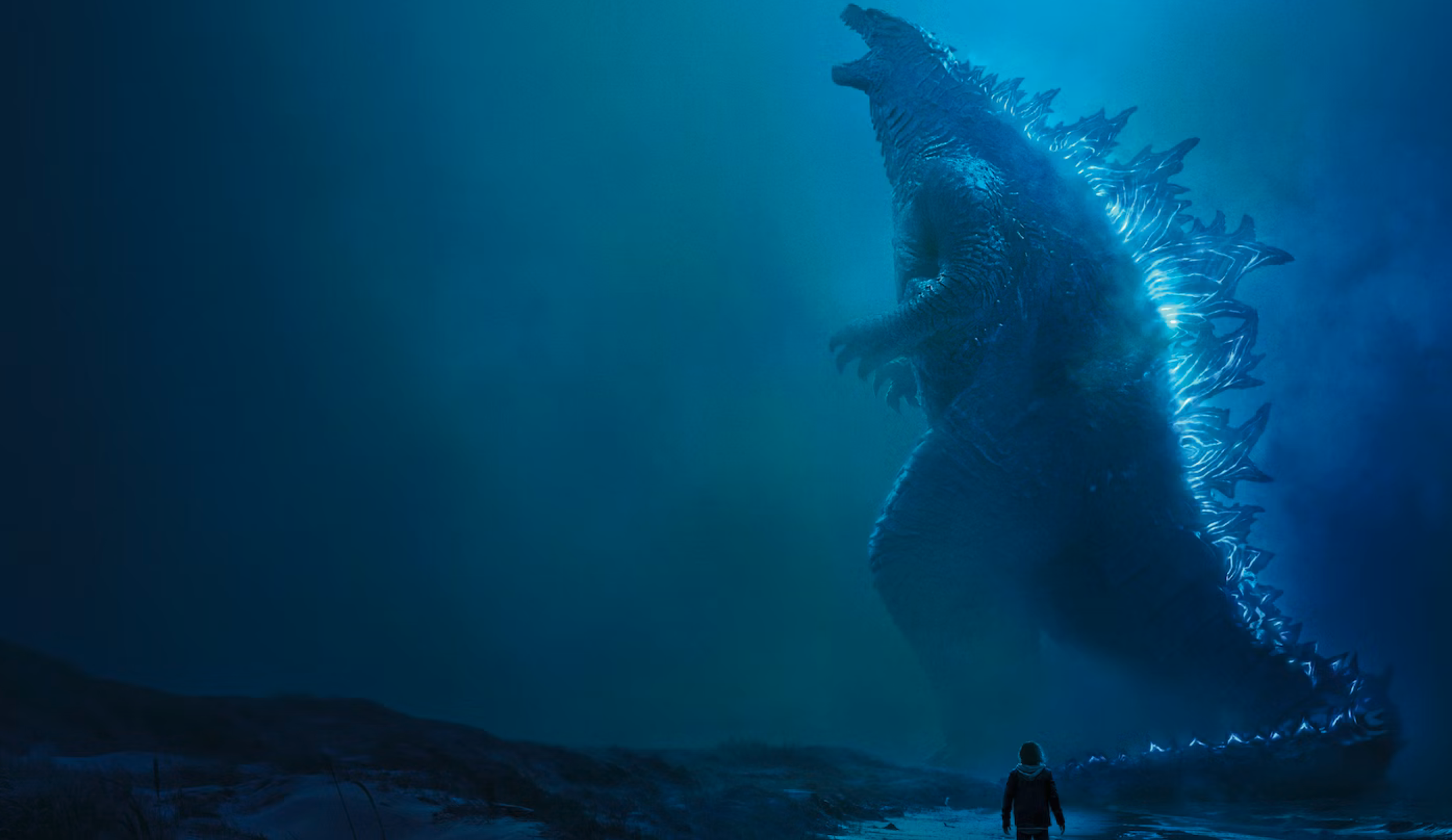You say Godzilla, I say Gojira.
Fiction by Steve Sabatka
My friend Jake Carlsen teaches creative writing and photography at Newport High School. Not only is Jake a gifted teacher and writer, but he laughs a lot, high and loud, just like Claude Rains in “The Invisible Man,” and he’s fun to be around. Jake is also a true cineaste and, most importantly, the loving father of two boys, aged 13 and seven. A few weeks ago, Jake invited me to join him and his sons to see Godzilla Minus One.
Godzilla and I go way back. Fifty years. We probably agree, you and I, that most Godzilla flicks are silly. But the first movie in the series, “Gojira” (ゴジラ, the Japanese name for the monster), photographed in stark, ominous black and white, remains a critically acclaimed and very serious fable about the horror of war, more pointedly, The Bomb, and the arrogance of man. (Gojira was released in 1954, less than a decade after Tokyo was firebombed and Hiroshima and Nagasaki were reduced to radioactive rubble.) American producers bought the rights in 1956 and renamed the movie “Godzilla, King of the Monsters!” They didn’t think American audiences would identify with an all-Japanese cast, so they spliced Raymond Burr into their revision and wedged in English dialogue as best they could, sometimes when the Japanese actors had their backs to the camera.
I caught the Raymond Burr version when I was four or five and still remember watching, dumbstruck, as the great gnarled, radioactive monster breached and then rose out of Tokyo Bay, darker than the night sky. That chilling, outsized image, low-budget and obviously fake as it was, went straight to my brain in an almost psychotropic way, and by the end of the movie, Gojira/Godzilla had clawed his reptilian way into my imagination and heart.
He’s still there, and today, I see Godzilla every time I see the ocean horizon here in Newport. And Lincoln City. And Depoe Bay. Yachats. I see him shouldering up from the depths and studying the shoreline with cold, stone-idol eyes, making sure we are keeping the peace. Or else.
So, of course, I jumped at the chance to see “Godzilla Minus One” with Jake and his sons. What I didn’t know was that Peter Herrmann would be coming with us. Peter is another good friend and master teacher, and he works at a Japanese food cart during his time off. He also has a killer comic book collection and is working on an epic book of his own. But Peter teaches science. Scientists are born skeptics, and I didn’t want to experience the latest Godzilla movie and hear comments like, “Of course, a creature that large would not hold up under its weight.”
But when the five of us met at the local multiplex, any doubts I had about Peter were redeemed when he produced several long and uncut, electric eel-looking sushi rolls that he had made himself.
“Ehomaki!” he announced and passed the rolls around. “This is how Tokyoites ate sushi while watching kabuki plays back in the day. We’ll smuggle these in.”
One of Jake’s sons, no stranger to sushi, was nonetheless mystified. “How do you eat ‘em?”
Peter: “Just like a burrito.”
“With your hands?”
“Yep.”
Jake laughed like Claude Rains, and then, with our sushi rolls stashed in our sleeves and pockets, we headed inside, bought tickets, and took our seats at the center of the auditorium.
After an eternity of commercials and previews, the house lights went down, and the Toho Studios logo appeared, just like in 1954: Kanji characters 東宝, surrounded by a shimmering circle of light.
I checked around for ushers, didn’t see any, and started chewing on my sushi roll. Salmon. Avocado. Shiitake. Just enough wasabi. Simple and perfect.
When the new Godzilla made his first appearance, alligator-scaled and roar-stomping and not at all happy, the five of us went just a little mad, and for the next two hours or so, we were all little boys, staring wide-eyed and shaking our heads in monster-wonder as Godzilla bit trains and sank warships and reminded all of us who is in charge, all in the original Japanese, with English subtitles. And toward the end of the movie, during an emotional scene that I won’t spoil, one of us was sniffling. I suspect it was Peter, which made me feel all the worse about suspecting him of being a scientific snob.
As the end credits ran, we all morphed back into our pre-movie selves but still buzzed with the roars and the rumbles and the lesson: It’s not nice to fool Monster Nature, or as Blue Oyster Cult put it:
History shows again and again
How nature points out the folly of men
Godzilla!
On the drive back to Newport, I asked Jake to pull over. It was twilight, and we could see the Yaquina Bay Lighthouse and the great waves and calmer water out to where the dark sea turned to pink and orange sky. We were all silent, with awe and just enough worry.
After a minute or two, Jake whispered a quote from one of his favorite writers, John Steinbeck:
“Men really need sea-monsters in their personal oceans. An ocean without its unnamed monsters would be like a completely dreamless sleep.”
As we drove home, I watched the ocean as the sun went down.

